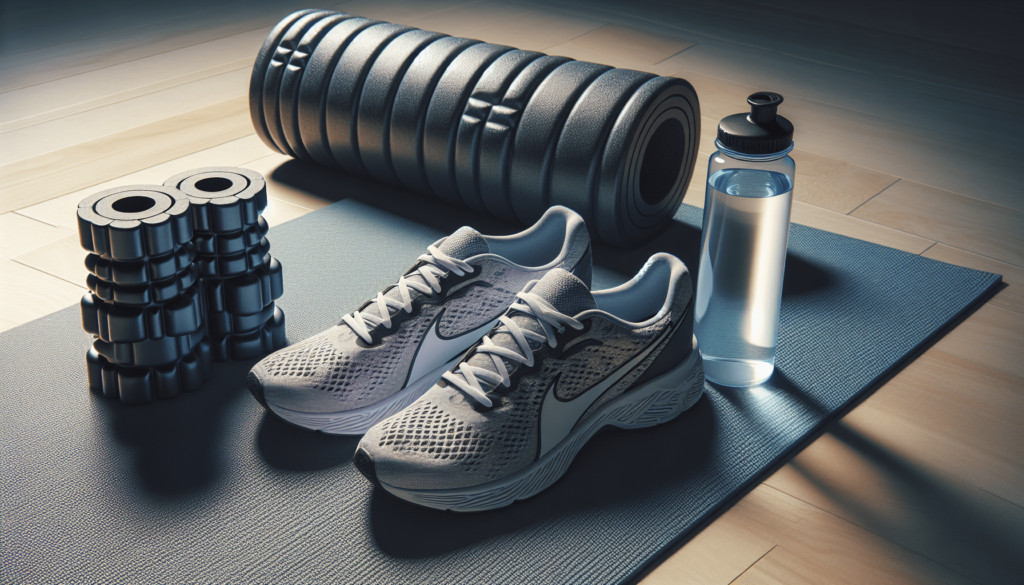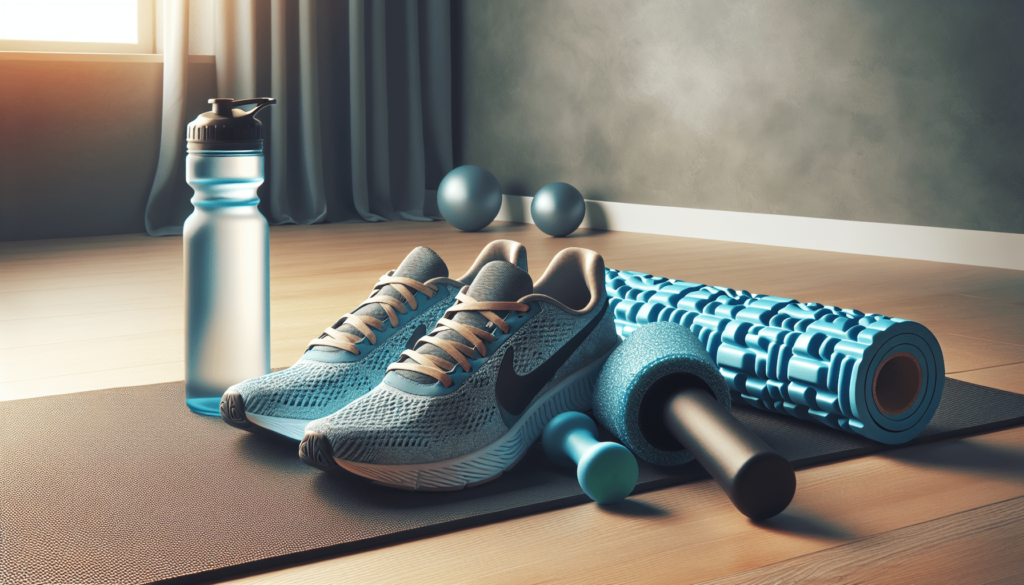Have you ever wondered why your neighbor, Bob from down the street, manages to run marathons, garden all day, and still have time to bake cookies for his kids’ school fundraiser while you’re splayed on the couch trying to muster energy to microwave leftover pizza? The secret might just lie in the majestic art of optimizing recovery for athletic performance. Now, don’t spin your sweatbands into a twist. We’re going to crack the secret of recovery so you can unlock the athletic prowess hidden beneath that comfy outfit you’ve been living in.
The Need for Recovery: It’s Not Just a “Rest Day”
You might think recovery involves little more than binge-watching TV while resting after your workout. But, my couch-loving friends, recovery is an intricate beast that ensures you aren’t just a puddle of post-exercise jelly. Restoration is what allows your muscles to mend, grow, and evolve into something wondrous.
Why Bother with Recovery?
Skipping recovery is like skipping dessert: sure, you’re still full, but you’ve denied yourself the sweet, sweet glory of enhanced performance. Recovery allows your muscles to repair microscopic tears, perfect for when you’re aiming for superhero status. It also reduces fatigue, both mental and physical. Yes, so the next time you grunt getting out of bed, remember: recovery could mean grunting like a champ instead.
The Science Bit
Your body isn’t just a collection of bones and muscles slacked together; it’s a finely-tuned machine. During workouts, you actually create micro-tears in your muscles (don’t freak out; these are good tears, not the ones like when you watch sad movies). It’s the repairing of these tears that makes you stronger. But here’s the catch: your body only does this magical transformation while you’re resting. In other words, you don’t actually build muscle while you work out; you do it while you’re sprawled out on your couch feeling like yesterday’s garbage.
Different Types of Recovery
Recovery isn’t one-size-fits-all, like those stretchy pants. But don’t fret; you’ll find the type of recovery that fits you perfectly, like your favorite pair of socks.
Active Recovery: The Sneaky Kind
Imagine continuing a mild workout on the pretense of “recovering.” Active recovery is like tricking your body into recovery while still feeling accomplished. Light activities such as walking, swimming, or cycling help in improving circulation and reducing muscle soreness. It feels less like a workout and more like taking a stroll to check out the neighbor’s garden gnomes.
Passive Recovery: The Classic
This is your legit, guilt-free permission to lounge. Passive recovery means resting completely, like a cat in a sunbeam. It’s about giving your body a break it so desperately needs. While it might sound counterproductive to your workout grind, rest days enhance muscle repair and growth. So, when someone asks, you can claim, with a straight face, that you’re ‘optimizing your recovery.’
Cross-Training: Getting Friendly With Other Sports
Sometimes switching things up can boost recovery. If you’re a runner, cycling or swimming might be the remedy for overworked legs. Cross-training works different muscle groups and adds variety to your fitness plan, preventing the dreadful burnout one might feel after the 892nd time on the treadmill.

Nutrition: Because You Are what You Eat (And Sometimes Drink)
Don’t roll your eyes. I know you’ve heard it before, but bear with me. Nutrition is the steamy affair most athletes have with their performance, and it dances sultry across the threshold of recovery. Not all snacks are created equal (sorry, potato chips).
Hydration: Better Than a Thousand Words
Water. The word alone is enough to drown in possibilities. Maintaining hydration is crucial because, essentially, your muscles are like aquatic creatures that desperately need water to function. Dehydration is that one toxic friend that shows up at your party uninvited and ruins everything. Keep your hydration on check by ensuring an adequate intake of water pre-exercise, during, and post-workout.
A Quick Look at Proper Hydration
| Activity | Water Intake Guide |
|---|---|
| Before | 500-600 ml of water 2-3 hours pre-exercise |
| During | Take small sips, 150-300 ml every 15-20 minutes |
| After | 500-700 ml for every pound of weight lost |
Proteins and Carbs: Your Recovery Co-pilots
Your favorite proteins and carbohydrates are powerhouses for recovery. Proteins repair those muscle tears and increase muscle synthesis, while the right carbs restore glycogen stores—fueling your body for the next big endeavor.
Timing is Everything
When you consume recovery-happy nutrients matters. Aim to indulge in your recovery meal within 45 minutes post-exercise because, science says, that’s the period your body most efficiently absorbs nutrients. Picture it as VIP entrance at the recovery club: No line, no wait, nutrients straight to the dance floor.
The Art of Sleep: Dream Big
Remember, sleep is not just for the lazy—it’s the holy grail for recovery. This is when your body takes on its alter-ego as a repair wizard. During quality sleep, Growth Hormone (a.k.a. your muscle maker) is released, rebuilding cells and tissues.
Sleep Quality Over Quantity
Before you conjure an image of Rip Van Winkle, let’s focus on quality. Although eight hours is often heralded like some magical number, everyone is different. Quality sleep means not tossing, turning, or dreaming about being chased by maniacal fitness coaches. Creating an optimal sleep environment can vastly improve your recovery results. Think comfy beds, cool rooms, and tech-free zones.

Recovery Tools: Gadgets and Gear Galore
Welcome to the part where you get to play with gadgets and look like a sci-fi character.
Foam Rollers: Painful Pleasure
Your muscles don’t have to suffer in silence. Enter the foam roller—the cylindrical sage that provides myofascial release, easing tension, and improving blood flow. Yes, it’ll be painful (a shocking level of it considering it’s essentially a foam log), but worth the relief and enhanced flexibility. Think of it as a rite of passage.
Compression Gear: The Deep Squeeze
Borrowed from the fashion wardrobe of your grandma, compression socks and sleeves add gradual pressure, aiding in circulation and reducing muscle vibration. Wear them after workouts for a snug abracadabra on your recovery.
Massage and Stretching: Your Best Friends
Ah, massage, the luxurious epitome of recovery. Book a session and let someone else do the work of kneading your tired muscles into oblivion. Stretching, on the other hand, is the budget-friendly massage. Incorporating a post-exercise stretch routine enhances flexibility and prevents injury. It’s a win-win, like finding buried treasure without leaving your backyard.
Mental Recovery: Because Your Brain Needs Love Too
Yes, you’re a fantastic mix of bones and brilliance. The mind is just as crucial in your athletic venture, acting as both your cheerleader and, sometimes, the heckler in the stands. Mental recovery is critical for sustained performance and growth.
Mindfulness and Meditation
Before you scoff, mindfulness have proven benefits that significantly augment recovery. Taking a few minutes out of your day to mentally unwind complements your physical recovery. So, close your eyes, focus on your breathing, and think happy thoughts or at least of your pet behaving better than yours truly.
Confidence Building: Be Your Own Hero
Replenishing mental strength encompasses learning new skills and setting smaller goals to achieve incremental successes. Cheer for yourself at every step; even Hercules would be proud.
Avoiding Burnout: The Little Voice That Won’t Shut Up
Rest doesn’t just apply to muscles. Spirit fatigue is real, and overdoing it can lead you to despise what you once loved. Balance is key: workout isn’t a sentence, it’s a joy!
Crafting Your Recovery Plan: The Perfect Cocktail
You may ask, “How do I put it all together?” Well, it involves a little bit of trial and a lot of error—kidding, you’re going to nail it the first time, probably.
Personalization: Your Plan, Your Rules
Your recovery plan should be as unique as your online passwords (but easier to remember). Factor in your age, workout intensity, and lifestyle habits. Mix different recovery strategies, listen to your body, and adapt.
Consistency is King
Like all great things, magic happens when you’re consistent. By implementing a recovery routine, you’re investing in a long-term relationship with your best self. You wouldn’t plant a tree and not water it, right? Water your recovery tree.
Record Your Progress: It’s Like Keeping a Diary, But Fewer Fs
Document your workouts, note your rest days, track your food. Reflect on what you feel lifts you up—or drags you down like a weighted vest—and adjust accordingly. Plus, imagine how smugly satisfied you’ll feel seeing the results.
In closing, with optimal recovery, you can transform from a mere mortal to the legend of your block, the Bob-like superhero; you’ll truly be the neighbor who runs marathons, gardens, and bakes cookies. With a dollop of enthusiasm and a sprinkle of humor, you’ll bound over your obstacles, raising the bar ever higher. Feeding muscles (and the brain) what they need keeps the spirit hungry for victory. And suddenly, each recovery day isn’t a villainous rest day but a partner to your performance.
So gear up, chill out, and let your athletic prowess blossom while you recover like a pro!
